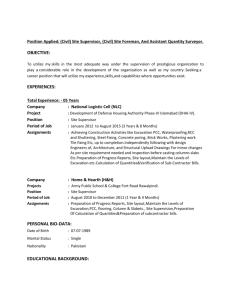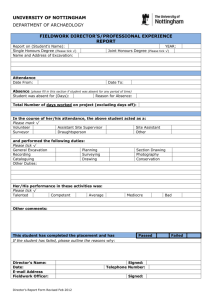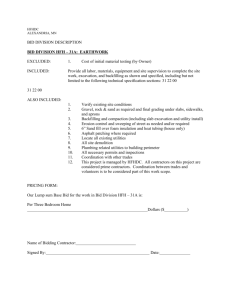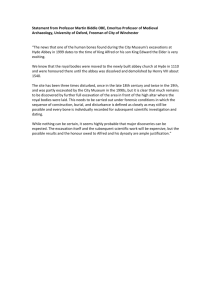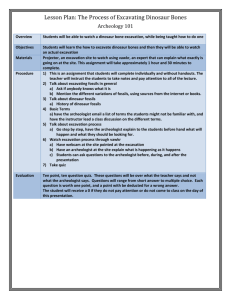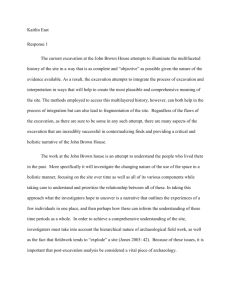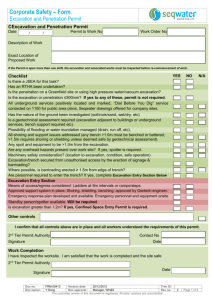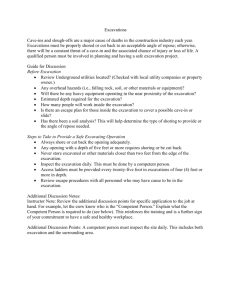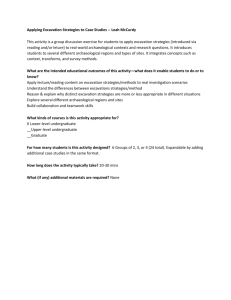Excavation and Digging Control Form
advertisement
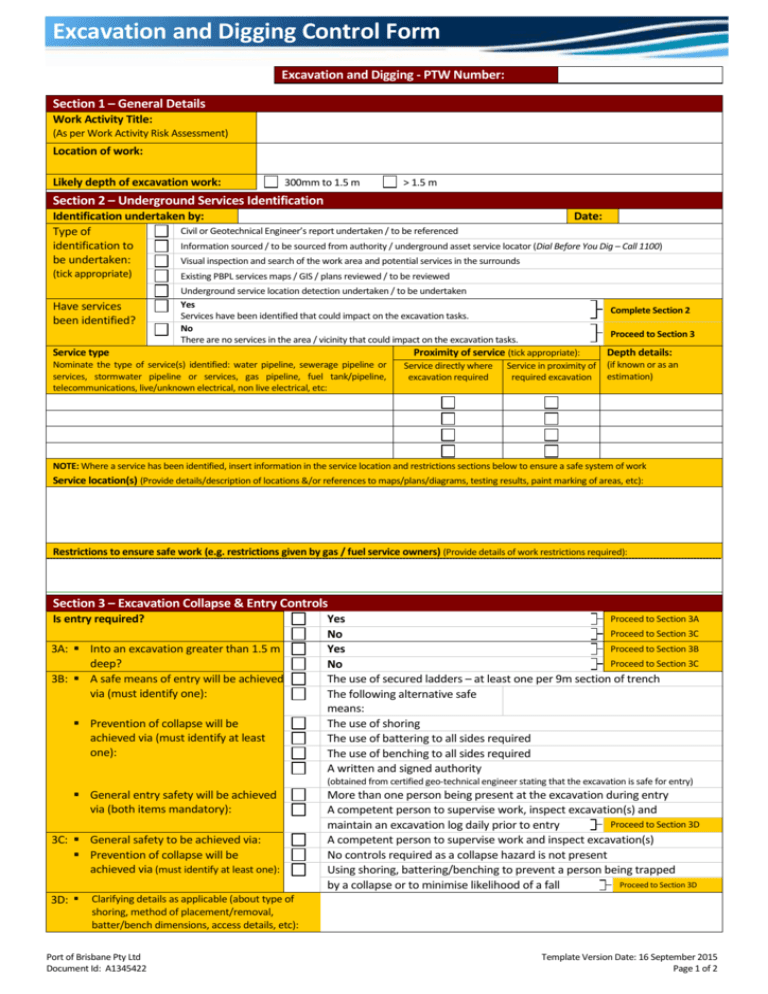
Excavation and Digging Control Form Excavation and Digging - PTW Number: Section 1 – General Details Work Activity Title: (As per Work Activity Risk Assessment) Location of work: Likely depth of excavation work: 300mm to 1.5 m > 1.5 m Section 2 – Underground Services Identification Identification undertaken by: Date: Civil or Geotechnical Engineer’s report undertaken / to be referenced Type of Information sourced / to be sourced from authority / underground asset service locator (Dial Before You Dig – Call 1100) identification to be undertaken: Visual inspection and search of the work area and potential services in the surrounds (tick appropriate) Existing PBPL services maps / GIS / plans reviewed / to be reviewed Underground service location detection undertaken / to be undertaken Yes Services have been identified that could impact on the excavation tasks. No There are no services in the area / vicinity that could impact on the excavation tasks. Service type Proximity of service (tick appropriate): Nominate the type of service(s) identified: water pipeline, sewerage pipeline or Service directly where Service in proximity of services, stormwater pipeline or services, gas pipeline, fuel tank/pipeline, excavation required required excavation telecommunications, live/unknown electrical, non live electrical, etc: Have services been identified? Complete Section 2 Proceed to Section 3 Depth details: (if known or as an estimation) NOTE: Where a service has been identified, insert information in the service location and restrictions sections below to ensure a safe system of work Service location(s) (Provide details/description of locations &/or references to maps/plans/diagrams, testing results, paint marking of areas, etc): Restrictions to ensure safe work (e.g. restrictions given by gas / fuel service owners) (Provide details of work restrictions required): Section 3 – Excavation Collapse & Entry Controls Is entry required? 3A: Into an excavation greater than 1.5 m deep? 3B: A safe means of entry will be achieved via (must identify one): Prevention of collapse will be achieved via (must identify at least one): Proceed to Section 3A Yes Proceed to Section 3C No Proceed to Section 3B Yes Proceed to Section 3C No The use of secured ladders – at least one per 9m section of trench The following alternative safe means: The use of shoring The use of battering to all sides required The use of benching to all sides required A written and signed authority (obtained from certified geo-technical engineer stating that the excavation is safe for entry) General entry safety will be achieved via (both items mandatory): 3C: General safety to be achieved via: Prevention of collapse will be achieved via (must identify at least one): 3D: More than one person being present at the excavation during entry A competent person to supervise work, inspect excavation(s) and Proceed to Section 3D maintain an excavation log daily prior to entry A competent person to supervise work and inspect excavation(s) No controls required as a collapse hazard is not present Using shoring, battering/benching to prevent a person being trapped Proceed to Section 3D by a collapse or to minimise likelihood of a fall Clarifying details as applicable (about type of shoring, method of placement/removal, batter/bench dimensions, access details, etc): Port of Brisbane Pty Ltd Document Id: A1345422 Template Version Date: 16 September 2015 Page 1 of 2 Excavation and Digging - PTW Number: Section 4 – Additional Considerations Tick as appropriate? Port of Brisbane Pty Ltd Excavation and Digging Control Form Close-by exhaust fumes, outputs, etc could affect the excavation atmosphere Exclusion / barricading is to be erected to exclude access / prevent falls Controls are required to prevent undermining of near-by structures The area is likely to contain contaminated soil / old process materials / chemicals New services will need to be marked / identified &/or service plans updated Include relevant control details within the Risk Assessment for the Work Activity Template Version Date: 16 September 2015 Page 2 of 2

